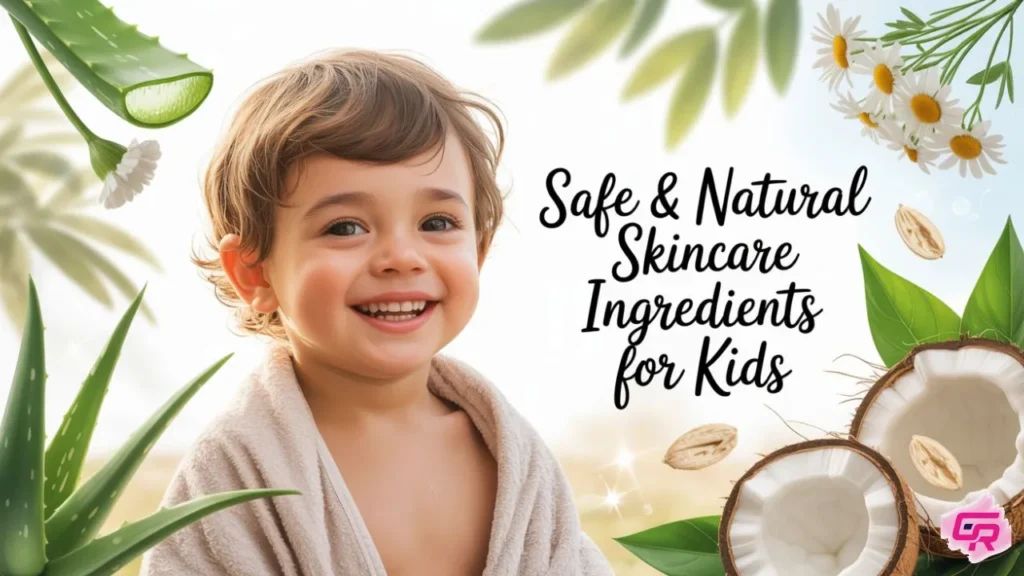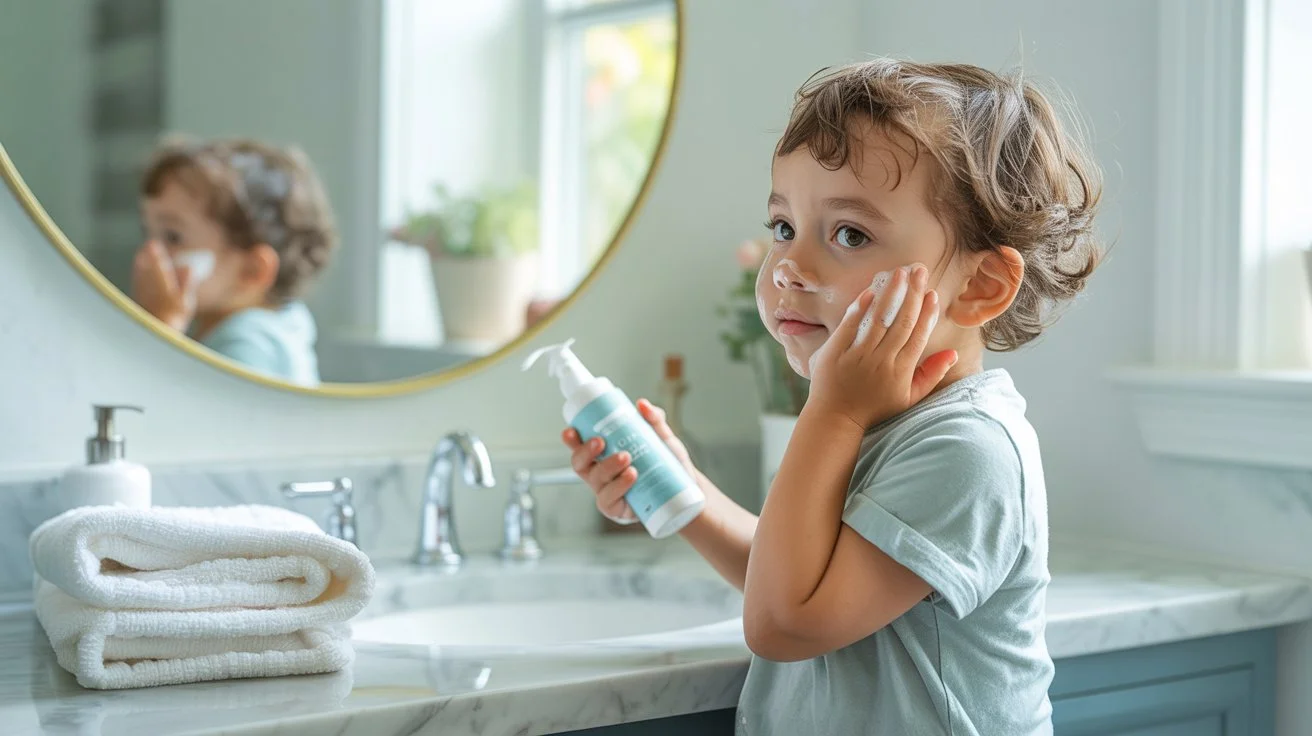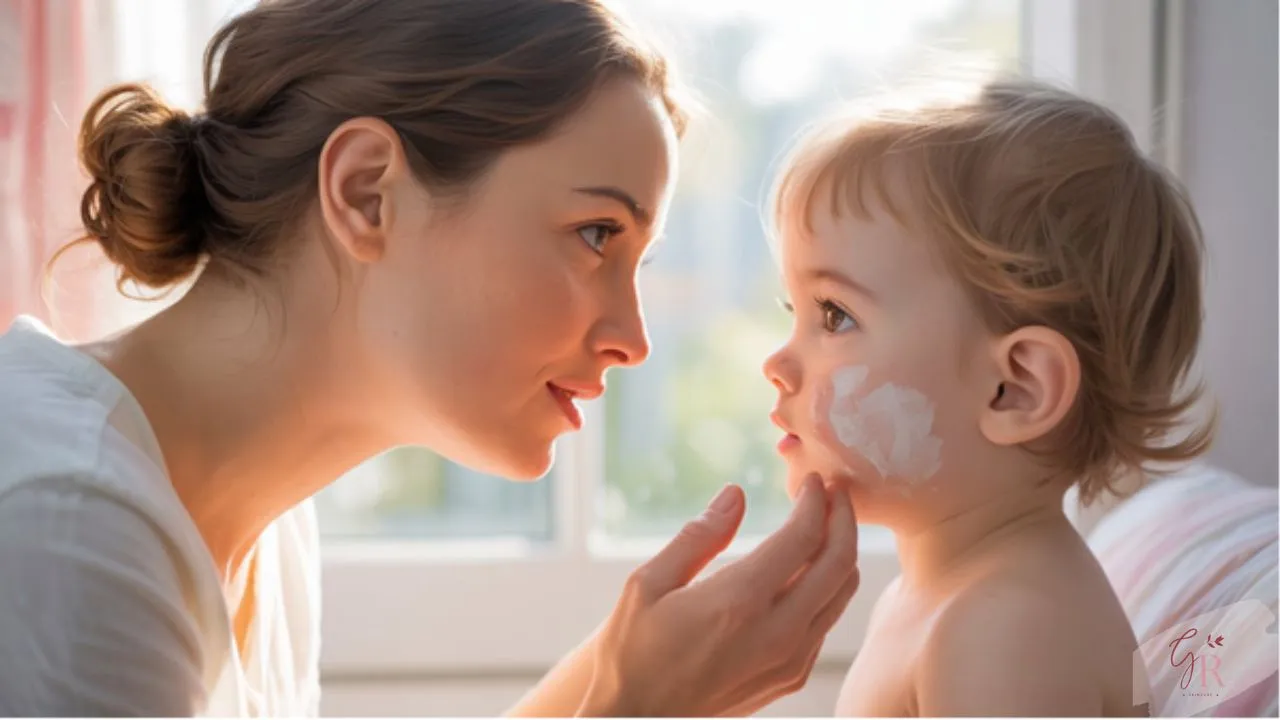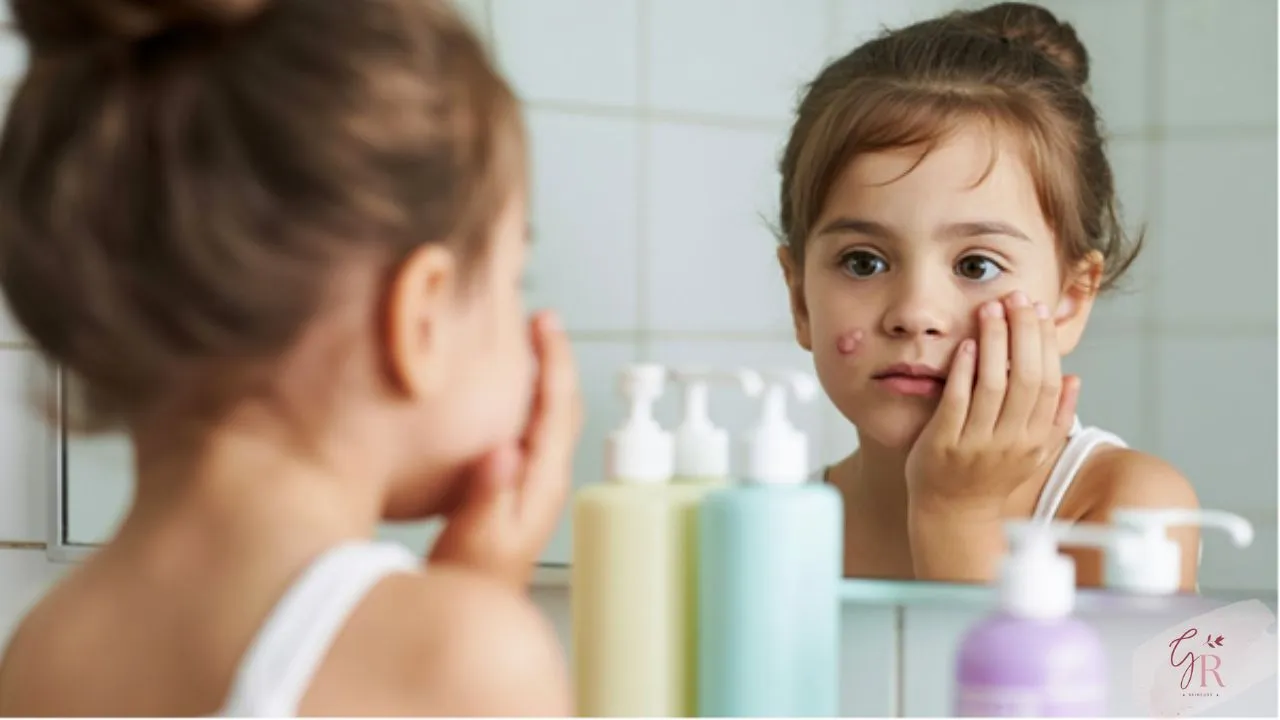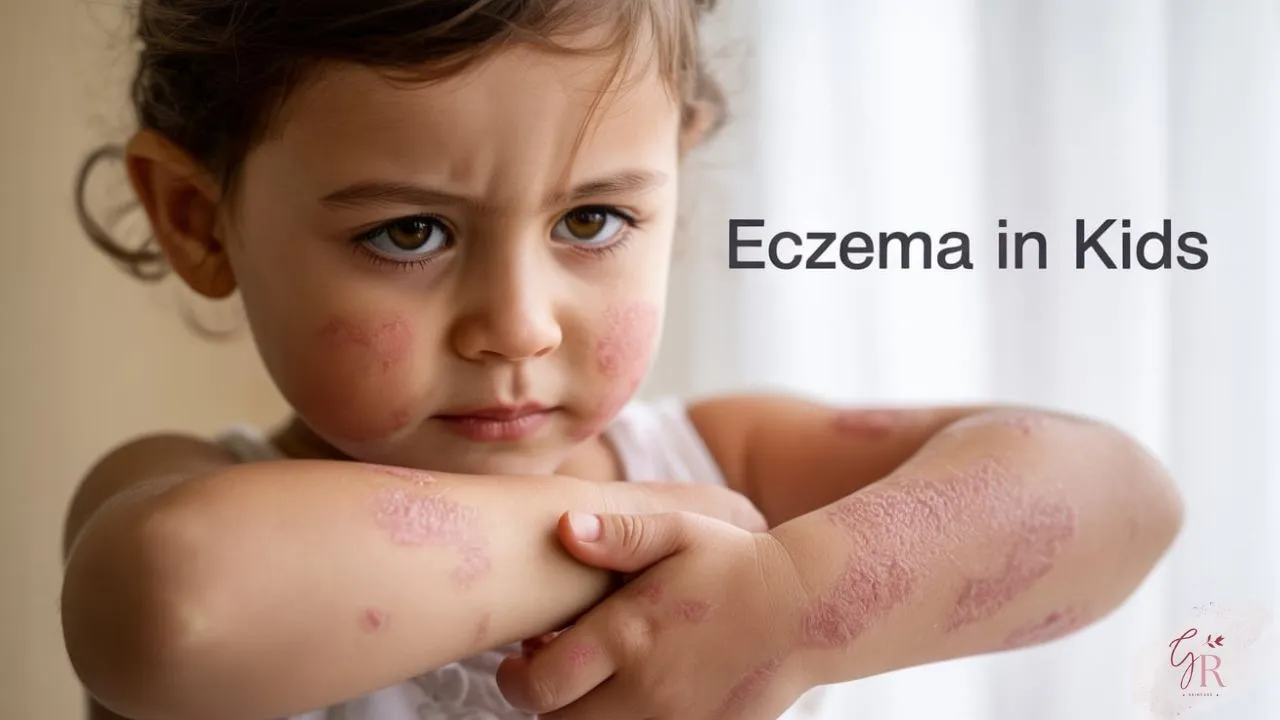Every parent wants the best for their kids — especially their delicate skin. But today’s skincare products are full of chemicals, which creates confusion about what’s safe and what’s not. This is why parents are now turning to natural and plant-based skincare.
In this article, you’ll get to know the 10 best natural skincare ingredients for kids that are safe, gentle, and easy to use. Whether it’s dryness, rashes, or irritation — these ingredients nourish the skin and can be found right in your home!
Why Natural Skincare Matters for Kids
Children’s skin is very delicate, so they are easily affected by harsh chemicals. That’s why it is important to use natural skincare ingredients for kids – it’s not just a fashion, it’s a necessity. Children’s skin barrier is thin, and even a little chemical can cause allergy, dryness or rash.
If you use chemical-free skincare products that are plant-based and gentle, it makes their skin healthy right from childhood. Parents also get peace of mind that they are choosing safe skincare for children for their children.
Gentle skincare routines protect the skin not just for today but also for the future. Natural things not only soothe the skin but also build trust between parents and the product.
External Source: American Academy of Dermatology – Baby Skin Tips
10 Best Natural Skincare Ingredients for Kids
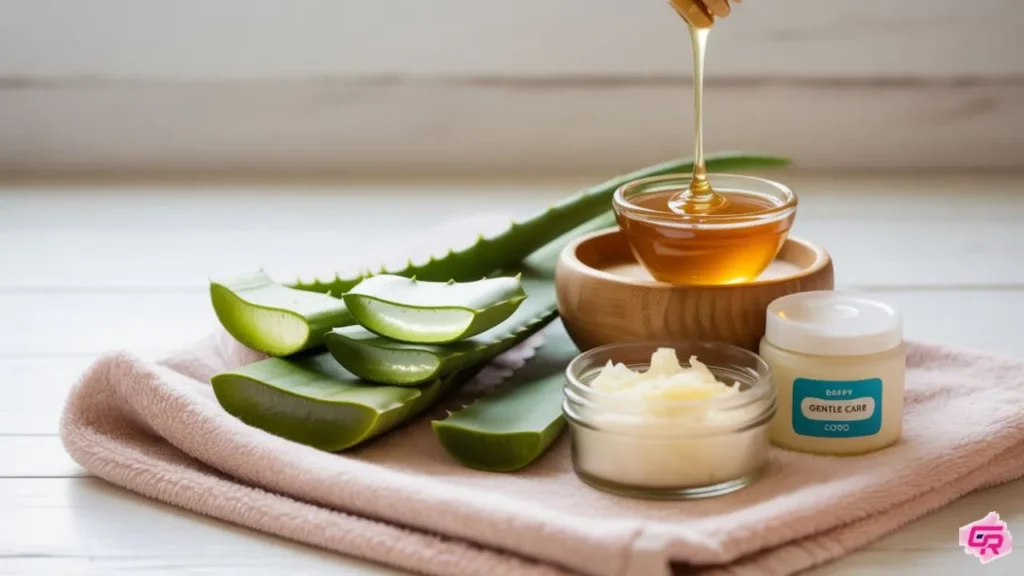
Natural skincare ingredients are not only safe for children’s sensitive skin, but they also prevent rashes, allergies and dryness. Nowadays many parents prefer chemical-free skincare. Below are 10 of the best natural skincare ingredients for kids, with detailed info on why they’re effective, how to use them, and what skin types they suit.
1. Aloe Vera – Nature’s Soother
Aloe vera is a cooling, healing plant known for its ability to calm irritation, reduce redness, and treat minor burns or rashes — perfect for kids’ sensitive skin.
- Benefits:
- Soothes inflamed or itchy areas
- Heals cuts, rashes, and sunburn
- Hydrates dry patches without making skin oily
- How to Use:
- Use pure aloe vera gel (without fragrance) after bath or sun exposure.
- Mix a small amount into moisturizer or apply directly to affected areas.
🟢 Best for: Redness, sun rash, mild eczema
2. Coconut Oil – Deep Natural Moisturizer
Cold-pressed coconut oil is rich in fatty acids that deeply moisturize the skin while acting as a natural antibacterial.
- Benefits:
- Prevents dryness and flaking
- Protects from bacteria and minor skin infections
- Strengthens skin barrier
- How to Use:
- Massage lightly into damp skin after bathing.
- Can also be used on scalp to prevent dryness.
🟢 Best for: Dry skin, rough elbows/knees, cradle cap
3. Shea Butter – Intense Hydration for Delicate Skin
Shea butter is a thick, buttery extract from the shea nut. It’s widely used in baby creams because of its rich moisturizing and anti-inflammatory qualities.
- Benefits:
- Treats dry patches, eczema, and irritated areas
- Locks in moisture without clogging pores
- Creates a protective barrier on skin
- How to Use:
- Rub a small amount between your hands and apply to extra-dry areas.
- Ideal before bedtime or during cold months.
🟢 Best for: Eczema, winter dryness, rough skin
4. Chamomile Extract – Gentle Calming Agent
Chamomile, often used in baby soaps and shampoos, is excellent for reducing redness, itchiness, and calming skin prone to eczema or rashes.
- Benefits:
- Reduces skin sensitivity
- Helps calm down allergic reactions
- Safe even for newborns
- How to Use:
- Use creams or lotions with chamomile extract.
- You can also dab cooled chamomile tea on the skin with cotton.
🟢 Best for: Sensitive skin, itchy patches, stress rashes
5. Oatmeal – Soothing and Protective
Colloidal oatmeal is a finely ground version of oats, known for its anti-itch and skin-soothing properties.
- Benefits:
- Relieves eczema, irritation, and dryness
- Strengthens the skin barrier
- Gentle enough for babies
- How to Use:
- Add 1 cup of ground oats to lukewarm bathwater and soak your child for 10–15 minutes.
- Pat dry and apply moisturizer afterward.
🟢 Best for: Eczema, bug bites, allergic skin reactions
6. Jojoba Oil – Balanced Hydration
Jojoba oil is unique because it mimics the skin’s natural oils (sebum), making it a non-greasy, deeply hydrating choice.
- Benefits:
- Regulates oil production
- Calms acne-prone or oily skin without clogging pores
- Nourishes and softens
- How to Use:
- Use 2–3 drops in place of a moisturizer or mix with lotion.
- Works well as a post-bath skin treatment.
🟢 Best for: Oily skin, pre-teen acne, balancing skin
7. Calendula – Natural Healer for Kids
Extracted from marigold flowers, calendula has been used in children’s skin treatments for its antibacterial and anti-inflammatory benefits.
- Benefits:
- Helps heal small wounds, diaper rashes, and cuts
- Reduces redness and inflammation
- Gentle enough for babies
- How to Use:
- Apply calendula cream to affected areas 2–3 times a day.
- You can also use calendula-infused oil for massage.
🟢 Best for: Diaper rash, mild infections, scrapes
8. Almond Oil – Vitamin-Rich & Lightweight
Almond oil is full of vitamin E, making it excellent for skin softness and glow. It absorbs quickly and doesn’t leave a greasy feeling.
- Benefits:
- Nourishes skin and promotes smooth texture
- Reduces dryness and irritation
- Boosts overall skin health
- How to Use:
- Use for daily massage or apply a few drops to dry areas.
- Avoid if your child has nut allergies.
🟢 Best for: Daily care, mild dryness, baby massage
9. Cucumber Extract – Cooling and Refreshing
Cucumber is known for its high water content and natural cooling effects. It soothes skin and reduces puffiness.
- Benefits:
- Reduces inflammation
- Refreshes skin, especially in summer
- Gentle for sensitive zones like around the eyes
- How to Use:
- Use a toner or moisturizer with cucumber extract.
- You can also place thin cucumber slices on puffy areas.
🟢 Best for: Heat rash, tired skin, summer skincare
10. Honey (Raw & Pure) – Natural Antibacterial
Raw honey has been used for centuries as a natural healing agent due to its antibacterial and moisturizing properties.
- Benefits:
- Heals minor wounds and inflammation
- Softens rough patches
- Locks in skin moisture
- How to Use:
- Mix a few drops with oatmeal for a soothing mask.
- Apply a thin layer to dry areas (only for kids above age 2).
🟢 Best for: Dry patches, small cuts, post-rash recovery
Related: Dry Skin in Kids: Easy Signs Every Parent Should Know
What to Avoid in Kids’ Skincare Products
When you choose skincare products for your kids, it is important to look at what is inside – not just what is. Many products come with fancy packaging but the ingredients inside can cause harm to the skin.
Here are some chemicals that should be avoided for the skin of children:
🚫 1. Parabens – Hidden Harmful Preservatives
Parabens are used to make lotions or creams last longer, but they can disturb the body’s hormonal system.
Avoid these names on labels:
- Methylparaben
- Propylparaben
- Butylparaben
🚫 2. Sulfates – Foam forming but harmful
Sodium Lauryl Sulfate (SLS) and Sodium Laureth Sulfate (SLES) make products foam — but they also strip away natural oils and dry out the skin. Kids’ skin is too delicate for them.
Avoid these chemicals for safety:
- SLS
- SLES
🚫 3. Synthetic Fragrances – Harm hidden behind fragrance
Fragrance smells good, but many times it is made from a mix of other chemicals which can cause allergies and rashes.
Avoid these names on labels:
- Fragrance
- Perfum
- Scented
🚫 4. Artificial Colors (Dyes)
Colors like Blue 1, Red 40, or Yellow 5 are completely unnecessary in kids’ skincare and can cause irritation or allergic reactions.
🚫 5. Alcohol-Based Products
Some alcohols (like isopropyl alcohol) dry out the skin and disturb the skin’s barrier — leading to itchiness and redness.
Helpful Tip for Parents:
Always read ingredient labels. If a product has too many chemical names you can’t pronounce — that’s a red flag. Choose products labeled as:
- “Fragrance-free”
- “Paraben-free”
- “Dermatologist-tested”
- “Hypoallergenic”
How to Use These Ingredients Safely
Natural skincare ingredients for kids only work when used correctly. Children’s skin is very soft and sensitive, so if you’re applying any new ingredient on them — even if it’s completely natural — it’s very important to use it safely.
External Source: Environmental Working Group (EWG) – Skin Deep Database
Patch Test First
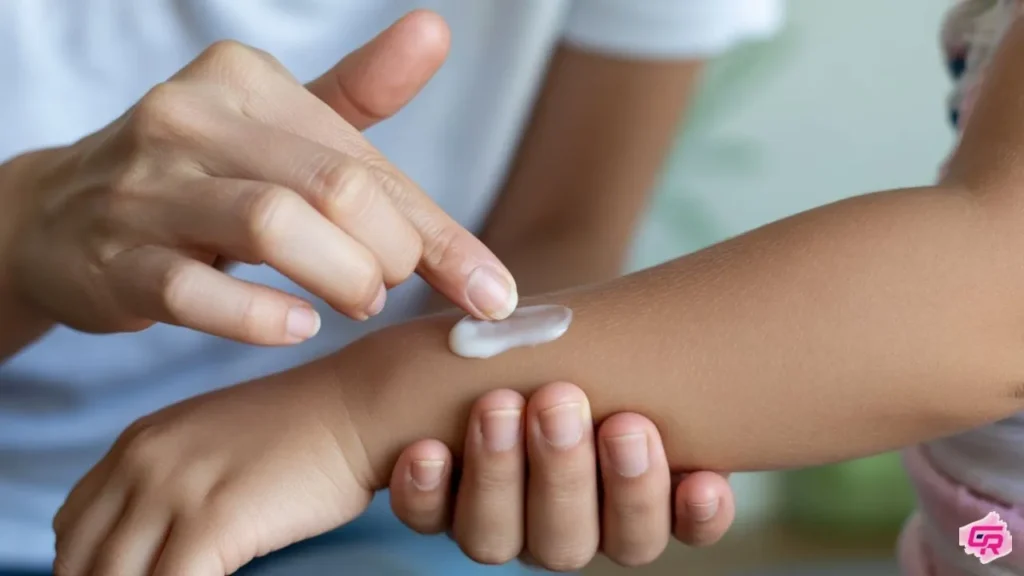
Before using any new ingredient — even natural ones like aloe vera or coconut oil — always do a patch test.
- Apply a small amount on your child’s inner forearm or behind the ear.
- Wait 24 hours to see if there’s any reaction like redness, swelling, or itching.
- If no reaction occurs, it’s generally safe to use.
This ensures your child doesn’t have any hidden allergies or sensitivity to natural ingredients.
Use in Small Quantities
Children’s skin absorbs quickly, so:
- Always apply in small quantity – do not use too much cream or oil.
- Apply only where needed – like dry patches or irritated areas.
Overuse of even the best natural skincare products for kids can clog pores or cause greasiness.
Choose Products Labeled for Babies/Kids
If you are buying ready-made skincare from the market, pay attention to:
- Specifically labeled as “safe for children” or “baby skincare”
- Free from parabens, sulfates, and synthetic fragrances
- Look for dermatologist-tested and hypoallergenic products
This allows you to avoid harmful skincare chemicals that are found in adult products.
DIY vs. Buying Branded Natural Skincare
You can use both options — but think carefully:
DIY Skincare: A good choice if you are using pure ingredients like raw honey, oatmeal, or cucumber — but they must be clean and fresh.
Branded Natural Products: When you need long shelf life or preservatives, branded options are safer — they’re properly tested.
💡 Pro Tip: If you’re unsure about DIY formulas, start with trusted, kid-friendly natural brands.
FAQs About Natural Skincare Ingredients for Kids
What skin care ingredients are good for kids?
The best natural skincare ingredients for kids are: aloe vera, coconut oil, shea butter, oatmeal, and chamomile. All of these are gentle and chemical-free, which are absolutely safe for children’s sensitive skin.
How to make natural skin care for kids?
To make natural skincare for kids at home, you can use coconut oil (for moisturizer), oatmeal (in bath water), and aloe vera gel (for rash). All things should be fragrance-free and do a patch test. These are the best natural skincare ingredients for kids.
What is the healthiest skincare brand for kids?
The best and healthiest skincare brands that are safe for children include: Earth Mama, California Baby, and Burt’s Bees Baby. These brands are free from harmful chemicals like parabens and sulfates and are also dermatologist-approved.
What is the best homemade skincare?
The best homemade skincare remedies are: coconut oil (moisturizer), oatmeal bath (for soothing), aloe vera (for cooling), and raw honey (for healing). These remedies are safe and effective for daily use.
Does homemade skincare actually work?
Yes, homemade skincare works if used correctly. Ingredients like aloe vera, coconut oil, and chamomile relieve itching and dryness. But always use clean and fresh ingredients and use them in small quantities.
Conclusion
Children’s skin is delicate, but if you use natural skincare ingredients for kids correctly, you can keep their skin safe and healthy. Like aloe vera, coconut oil and oatmeal — all these ingredients make the skin soft and protected, without any side effects.
Always remember — every child is different. Patch test each new ingredient, use it in small quantities, and choose baby-safe or homemade products. Using natural skincare ingredients for kids is a safe and long-term investment for their healthy skin.
Hi, I’m Ramsis — a passionate skincare researcher who believes in the power of gentle, natural care for kids and teens. I spend my time studying dermatology-backed methods and safe home remedies to help parents make confident skincare choices. Every tip you read here is carefully researched and simplified just for you!

